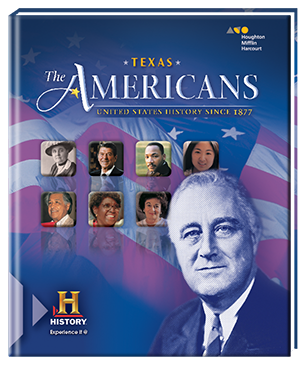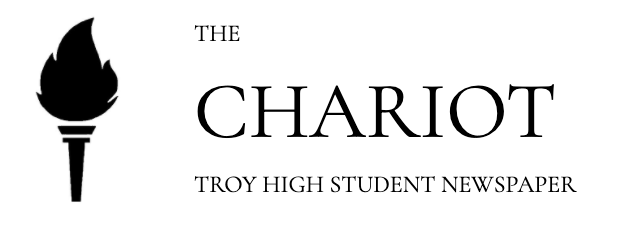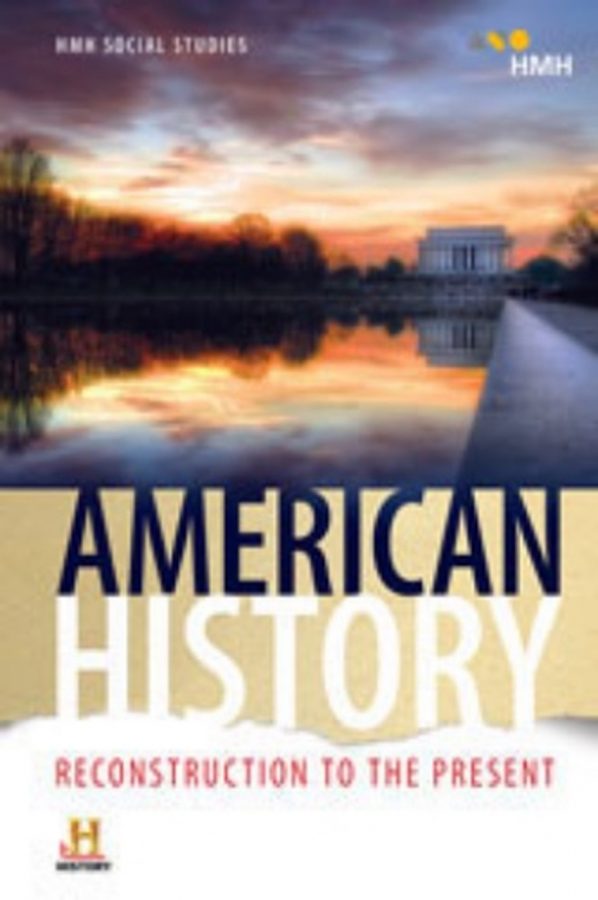The Story of History Rewritten
The Chariot examines the political biases in two THS American history textbooks in comparison to Texas and California’s.
The Chariot examines the political biases in two THS American history textbooks in comparison to Texas and California’s.
The New York Times released an article on Jan. 12, 2020 examining American History textbooks produced by the same authors in two states: California and Texas. For the most part, their findings were as follows: While the facts were presented in both, Texas textbooks tended to agree more with republican ideology, whereas California had details aligning more with their state’s democratic ideals.
So, The Chariot pulled out Troy High’s American History textbooks and thus began the debate of whether the story of history should follow political biases.
History Teacher Gordon Gibbons says there is no way to eliminate biases, but has a theory as to why these books may vary.
“Undoubtedly politics plays a role in writing history textbooks,” Gibbons said. “Within a state, the state government decides what version of history is taught. Various political actors have a vested interest in pushing a particular narrative since it furthers their own political agenda.”
In addition, Massachusetts History Teacher Deborah Grady believes textbooks differ because of different publishers. Her classroom uses “The American Nation,” published in 2003 by Holt Publishers. She believes history is important to understanding people.
“I think as you study history you begin to see that you know all the very different societies, how they work and how they didn’t,” Grady said. “I think the more you study history, the more you get to see the differences, [and] there’s a lot of similarities across society so you get to see that too.”
Since Michigan is considered a purple state, a state where the politics are often some parts left and some parts right, it should fall somewhere in the middle of the political spectrum. The Chariot examined two American History textbooks: The one the history classes currently use and the history textbook that circulated out two years ago. The last class to use the “old” textbook was the class of 2020 in their sophomore year.
These textbooks were different. Like Gibbons noted, the new textbook generally has more representation of minority groups and females. This leads to more in-depth information, but also more critiques of events and people.

One of the differences The New York Times reported was the California textbook annotated the Second Amendment, which includes the hotly debated right to bear arms, while the Texas textbook declined to have a notation. Both the “old” and the “new” American History textbooks at THS lack an annotation of this amendment, like the Texas textbook, despite having an interpretation on the first, third, fourth and fifth amendment on the same page.
The violence post-Civil War is also depicted differently in each of the textbooks. California’s textbook brings up how newly-freed African Americans fell victim to lynching from notorious hate groups as a way to prevent Black men from participating in poltics, but this small detail is non-existant in both the “new” THS and Texas textbook. While both textbooks discuss the fact that violence ensued, neither give a straight-forward answer as to why it occurred. The “new” textbook says, for the most part, white southerners were angry for loss of political power and economic stagnation and “most white southerners swallowed whatever resentment they felt over African American suffrage and participation in government.” Although, in the following paragraph, it talks through the violence African Americans faced, unlike its older counterpart which says these illegal acts were done to prevent blacks from voting.
Enter suburbia, the era often called “White Flight,” where thousands of white Americans left their homes in cities like Detroit to live in the suburbs. Each textbook deals with this era slightly differently. California specifies that whites were wanting to get away from culturally-diverse regions, such as the cities, similar to the “new” textbook from THS saying “[whites] isolated themselves from other races and classes.” The “old” textbook from THS strictly states the fact that this movement occurred. Texas’ book brings up the crime and congestion with being associated with a big city.
As part of diversifying the narrative, the “new” textbook cited Wong Kim Ark, a man who took his case to the Supreme Court in 1898 in an effort to grant the children born to Chinese immigrants in the United States citizenship yet, the “old” and Texas’ textbook lack any mention of Wong Kim Ark’s legacy.
All four books devoted pages for the economic and artistic boom of the Harlem Renaissance; the only one to disprove the importance of the period was the Texas textbook, saying “some, for example, dismissed the quality of literature during the period.”
Similar to Texas, the “old” textbook seemed to glorify capitalism giant Andrew Carnegie, unlike California which criticized the poor environmental impact of Carnegie’s Standard Oil Company.
The American History textbooks at Troy High span from Reconstruction to the date of publication. This may be why both the “new” and the “old” textbooks dedicate one section to slavery within the United States in one of the review chapters.
History is a story and there are sides to every story. Overall, the results The Chariot found aligned with their “purple” political biases. Gibbons urges students to note the biases they are reading or hearing.
“[Teachers attempt] to be as neutral as possible,” Gibbons said. “Being careful to present both sides of an issue when appropriate, and playing ‘devil’s advocate’ to any student position are commonly used. A teacher can lay bare the bias in the textbook or their own position, allowing the students to acknowledge it and draw conclusions. By being open to their opinion, the students can get practice separating bias from fact.”
Gibbons weighs in on how the textbooks should be written.
“The only way to successfully write [the textbooks] is by committee, and with peer review,” Gibbons said. “There is no way to totally eliminate bias, or political influence totally, but by assembling a diverse team of experts, one could create a balanced textbook. Unfortunately, writing by committee usually means a book that lacks any sort of controversy, interest, point of view, and will ultimately satisfy no-one.”
History spans millennials with millions of events, groups, and people. This is one textbook, in one class of high school. The story of history is never complete and never perfect because no story is ever really perfect. Whether or not the textbooks are written the way students need or want them to be or whether or not it aligns with their own biases and preconceptions, the story of history has biases and students need to keep this in mind when reading any history textbooks.
Your donation will support the student journalists of Troy High School - MI. Your contribution will allow us to print our work, purchase equipment and cover our annual website hosting costs.



